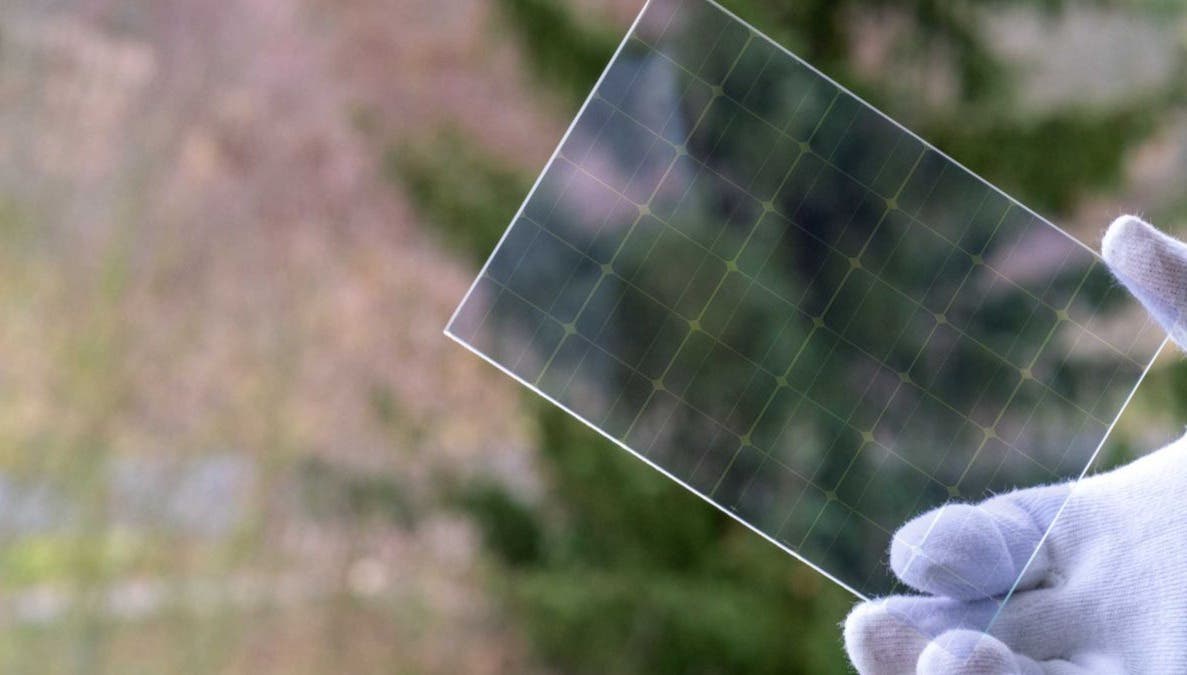Cutting-edge transparent solar cells can generate power 1000x more efficiently
These near-invisible solar cells have an average visible transparency of 79%, which means that they can be placed almost anywhere.

[Dec. 18, 2023: JD Shavit, The Brighter Side of News]
Researchers coated various thin metals onto the ITO and inserted a thin layer of Tungsten Oxide between the coated ITO and the tungsten disulfide. (CREDIT: luchschenF)
Solar panels have long been criticized for their appearance, with some people arguing that the large, opaque panels spoil the look of homes and businesses. But now, a group of researchers has developed a highly transparent solar cell using a 2D atomic sheet that could change the perception of solar energy. These near-invisible solar cells have an average visible transparency of 79%, which means that they can potentially be placed almost anywhere, including building windows, car front panels, and even human skin.
Scientists have been trying to develop transparent solar cells for years, but suitable materials have not existed until now. To create the solar cell, the researchers controlled the contact barriers between indium tin oxide (ITO), one of the most widely used transparent conducting oxides, and a monolayer tungsten disulfide. They coated various thin metals onto the ITO and inserted a thin layer of tungsten oxide between the coated ITO and the tungsten disulfide.
"The way in which we formed the solar cell resulted in a power conversion efficiency over 1000 times that of a device using a normal ITO electrode," said Toshiaki Kato, the corresponding author of the paper and associate professor at Tohoku University's Graduate School of Engineering.
To test the potential applications of the transparent solar cells, the researchers integrated them into a module and placed it on a glass window. The module maintained high transparency, and the researchers measured its performance using a solar simulator.
Related Stories
The results indicated that the module generated a power density of approximately 13 milliwatts per square centimeter, which is comparable to other transparent solar cell technologies.
The group did not stop there. They also explored how their solar cell could be expanded for use in an actual solar panel.
"We discovered the appropriate design modifications needed to avoid an unexpected voltage drop that accompanies increasing the device area," Kato said.
The Potential Impact of Transparent Solar Cells
Transparent solar cells have the potential to revolutionize the energy industry by expanding the ways in which solar energy can be used. Traditional solar panels are limited to rooftops and other large, flat surfaces, but transparent solar cells could be integrated into buildings and vehicles, as well as other surfaces that are currently not being utilized for energy production.
Highly Transparent Solar Cell with 2D Atomic Sheet Successfully Fabricated. (CREDIT: Toshiaki Kato)
The potential applications of transparent solar cells are vast. For example, they could be used to create a new generation of energy-efficient buildings that generate their own power while also allowing natural light to enter. They could also be used to power electric vehicles, which would increase their range and make them more sustainable.
Additionally, transparent solar cells could be used in a variety of consumer products, such as smartphones and other electronic devices. This could eliminate the need for chargers and power banks, as the devices would be able to charge themselves from ambient light.
(a) Schematic illustration of device structure and ideal optimal band structure for the transparent Schottky solar cell. (b) Images of samples for WF and AVT measurement. ITO was sputtered on quartz substrate and a thin metal film was coated on the top of ITO. (c) Transparency spectra of quartz, ITO/quartz, and Mx/ITO on quartz (Mx = Ni1, Ni5, Fe1, Fe2, Al1, Al5, Cu1, Ag1, Au1, and Au5). (d) Plot of WF for Mx/ITO measured by PYS. Inset in (d) shows typical photoemission features of Ni1/ITO and fitting curve to obtain the WF. (e) Scatters of transparency and work function of tested Mx/ITO. (CREDIT: Scientific Reports)
Furthermore, transparent solar cells could have a significant impact on the environment by reducing the need for traditional energy sources. Solar energy is a clean and renewable source of energy that does not produce greenhouse gas emissions, which contribute to climate change.
The Development of Transparent Solar Cells
The development of transparent solar cells has been a long and challenging process, with researchers facing numerous obstacles along the way.
An optical image of a highly-transparent solar cell fabricated with a 2D atomic sheet. (CREDIT: Toshiaki Kato)
One of the main challenges has been finding a suitable material for the solar cell. The material needs to be transparent, conductive, and able to convert light into electricity. The material also needs to be stable and durable, as it will be exposed to the elements.
Researchers have tried a variety of materials, including organic and inorganic materials, but most have been either too opaque or not efficient enough to produce meaningful amounts of electricity.
The use of 2D materials, such as graphene and tungsten disulfide, has shown promise in recent years. These materials are thin and transparent, and they have the ability to conduct electricity. However, they are also fragile and can be difficult to work with.
Schematic illustration of spatially resolved photoexcited charge-carrier mapping for the device with asymmetric electrodes: Cu/ITO and Ni/ITO. Images of the device under a microscope. Photocurrent line scan of the device. Integrated photocurrent based on photocurrent in as the black line; the red line comes from inverse treatment of the y-axis, which represents the potential profile in the conduction band. (CREDIT: Scientific Reports)
The potential applications of these near-invisible solar cells are numerous. They could be integrated into building windows to generate electricity without obstructing views or changing the appearance of the building. This could be particularly useful for skyscrapers, which have a large surface area of glass windows. Transparent solar cells could also be integrated into the front panels of cars to provide power for onboard electronics or even the electric motor.
Another potential application is in wearable technology. The near-invisible solar cells could be integrated into clothing or accessories to provide power for small electronics such as smartwatches or fitness trackers. They could even be integrated into human skin to power medical devices such as pacemakers or glucose monitors.
The researchers acknowledge that there are still challenges to be addressed before these transparent solar cells can be widely adopted.
Details of their research were published in the journal Scientific Reports.
Note: Materials provided above by The Brighter Side of News. Content may be edited for style and length.
Like these kind of feel good stories? Get the Brighter Side of News' newsletter.
Joshua Shavit
Science & Technology Writer | AI and Robotics Reporter
Joshua Shavit is a Los Angeles-based science and technology writer with a passion for exploring the breakthroughs shaping the future. As a contributor to The Brighter Side of News, he focuses on positive and transformative advancements in AI, technology, physics, engineering, robotics and space science. Joshua is currently working towards a Bachelor of Science in Business Administration at the University of California, Berkeley. He combines his academic background with a talent for storytelling, making complex scientific discoveries engaging and accessible. His work highlights the innovators behind the ideas, bringing readers closer to the people driving progress.



